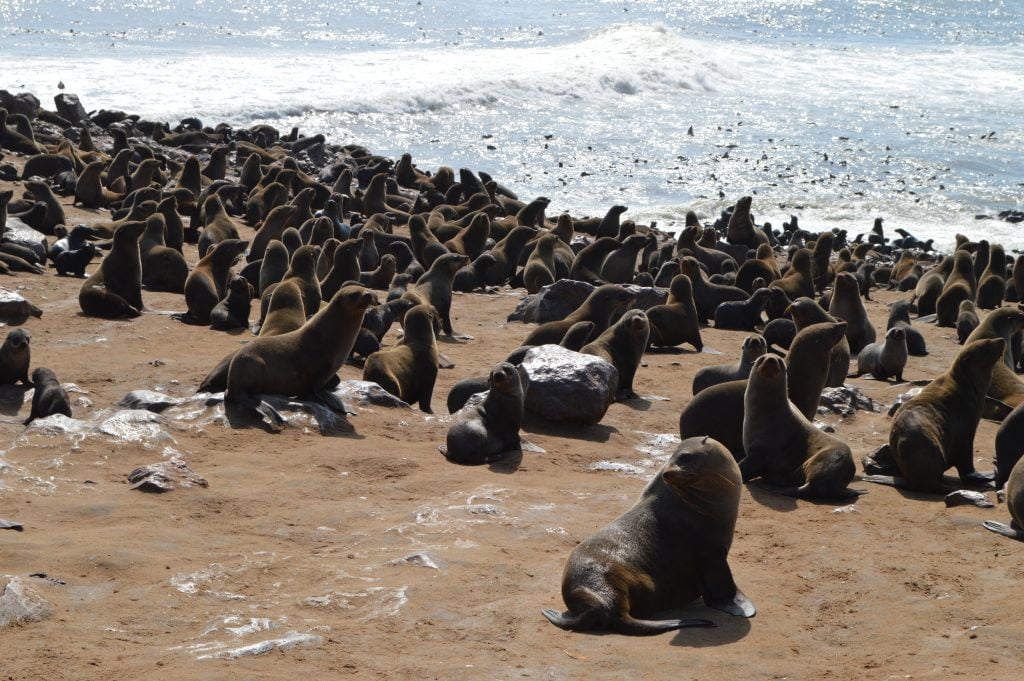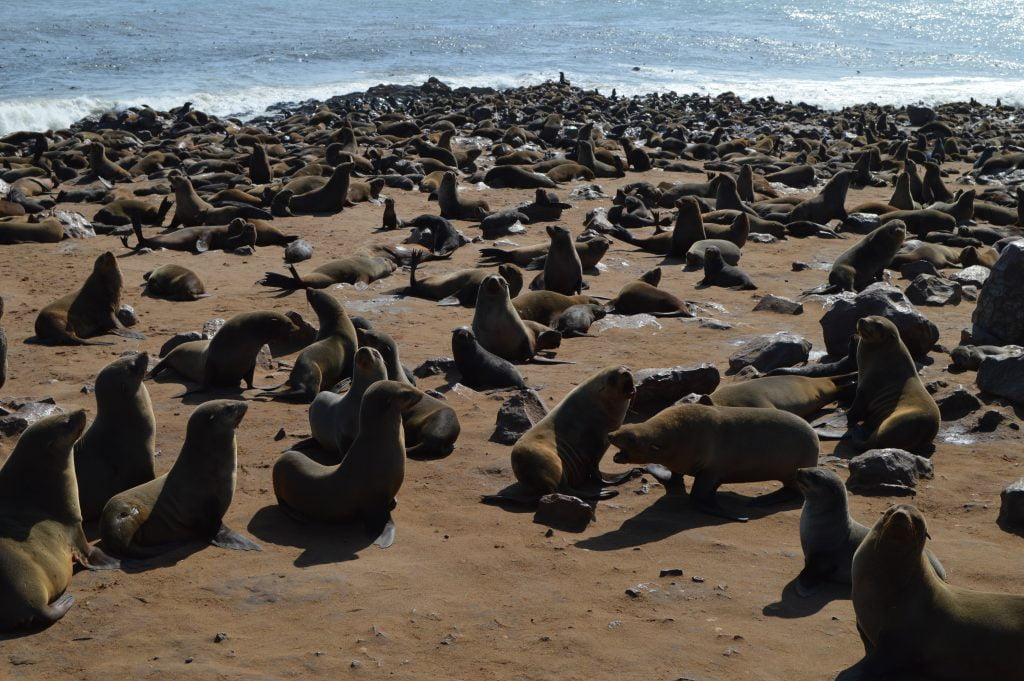Would you like to visit a colony of over 200,000 Cape Fur Seals? Visit Cape Cross Seal Reserve on the desolate Namibia Coastline to experience one of the world’s most amazing attractions. It is a 1.5 hour drive north of Swakopund, so it is no problem for you to do a self drive tour. Are you up for it? Pack a lunch and get the best adventure drive in Namibia with a visit to one of the country’s best attractions. I will tell you everything you need to know in the post below.
Introduction to the Namibia’s Skeleton Coast
The Skeleton Coast is indeed the most desolate coastline in the world, unless you are a cape fur seal. If seals were people, they would be included in Namibia’s national population statistics. If so, Cape Cross Seal Reserve would be the 2nd most populous city in Namibia, behind only Windhoek.
This explosion of life is almost like a desert mirage as you approach the Cape. The big brown mass of 200,000 seals begins to take individual form and becomes a moving, swimming, barking and slightly smelly group of individuals.
Cape Cross Seal Reserve Opening Hours
Open Daily From:
08:00–17:00 (16 November– 30 June)
10:00–17:00 (1 July–15 November)
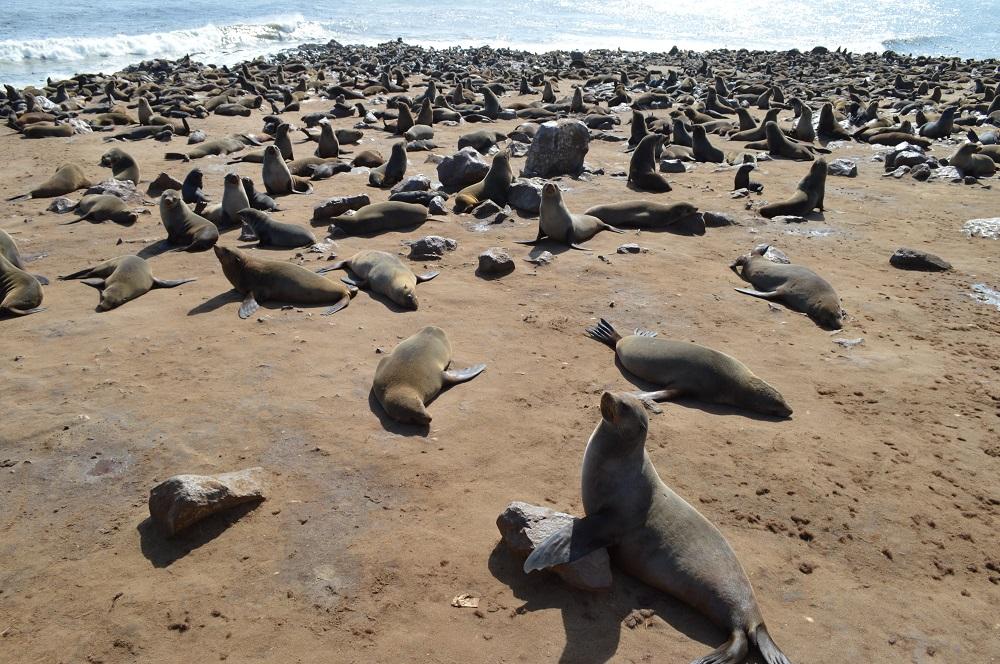
Location of the Cape Cross Seal Reserve
The Cape Cross Seal Reserve is located about 122 km north of Swakopmund. The Swakopmund to Cape Cross drive will will take 1-2 hours. Finding your way from Swakopmund is very simple just get onto the Henties Bay Road and drive north out of town. The turn off is just past the White Lady Salt Pan to the left, there should be a sign there. Keep your eyes peeled along the way and you will spot a shipwreck (if it is still there).

Skeleton Coastline
The reserve is located at the southern end of the The Skeleton Coast. This infamously treacherous coastline runs from where the Swakop River flows into the Atlantic ocean, to the Kunene River near the border of Angola.
Furthermore, the infamous coastline gets its name due to the whale skeletons that used to wash ashore and litter the coastline. As a result, 600 years ago the local coastal tribes used to build their houses out of the whale bones.
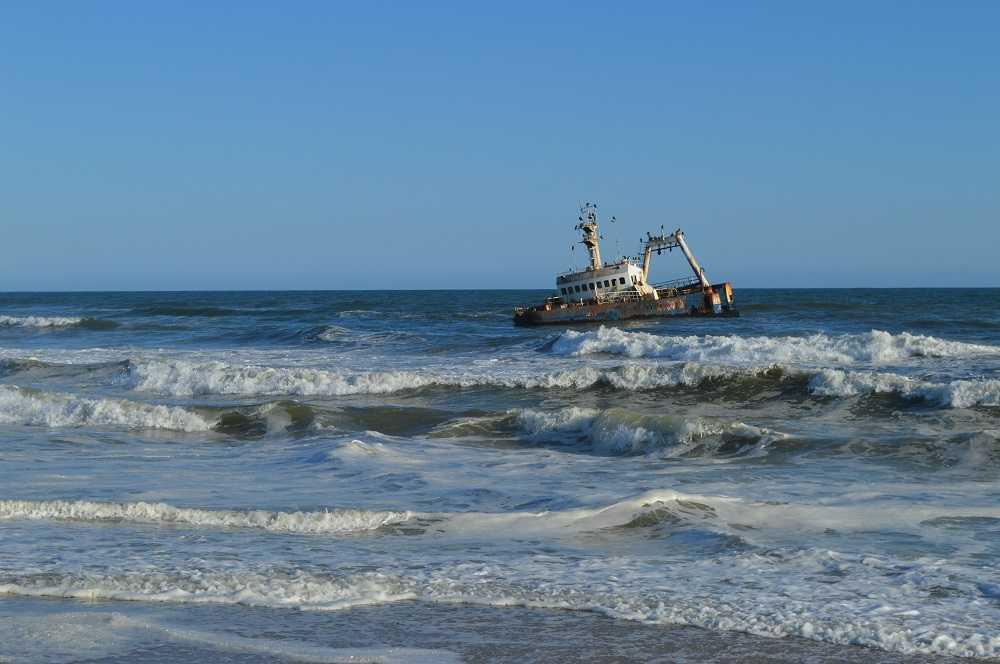
In present day, it is no longer common to see whale skeletons. However, there are of course lots of seals and the occasional seal skeleton, jackals, brown hyenas, huge salt pans, lichen fields and also the occasional shipwreck (see above).
The Skeleton Coast region has had a inhospitable reputation going back centuries and even thousands of years. The San (also known as the “Bushman”) of the Namibian interior referred to the Skeleton Coastal region as “the land God made in anger” and the Portuguese sailors bluntly referred to it as the “Gates of Hell”.
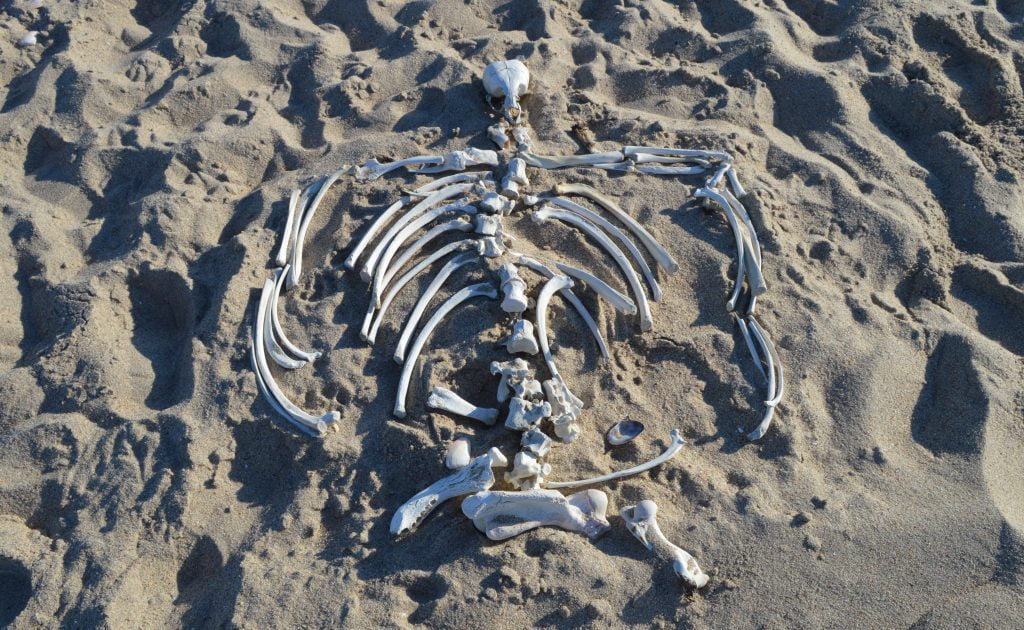
History of Cape Cross Seal Reserve
In 1486, the famous Portuguese explorer Diego Cao landed on the Cape and erected a stone cross monument. This established Portugal’s claim to the coastline.
However, over the course of the next 400 years (and many shipwrecks) European explorers did not take an interest in Cape Cross. Only when guano was discovered there in 1895, did they take a serious interest in the area. Guano is nutrient rich bird waste used for agricultural fertilizer.
The Germans then took possession of the land and the guano business boomed. The boom lasted for about a decade and millions of tons of bird excrement was shipped to Europe. The countries first railway was built during this time and also a water distillation plant.
Just like in the “Old West” some outlaws made the Cape Cross Post Office the objective of the countries first postal robbery. After the boom ended, nature slowly reclaimed this area and the bay where the ships brought in provisions is now a giant salt pan.
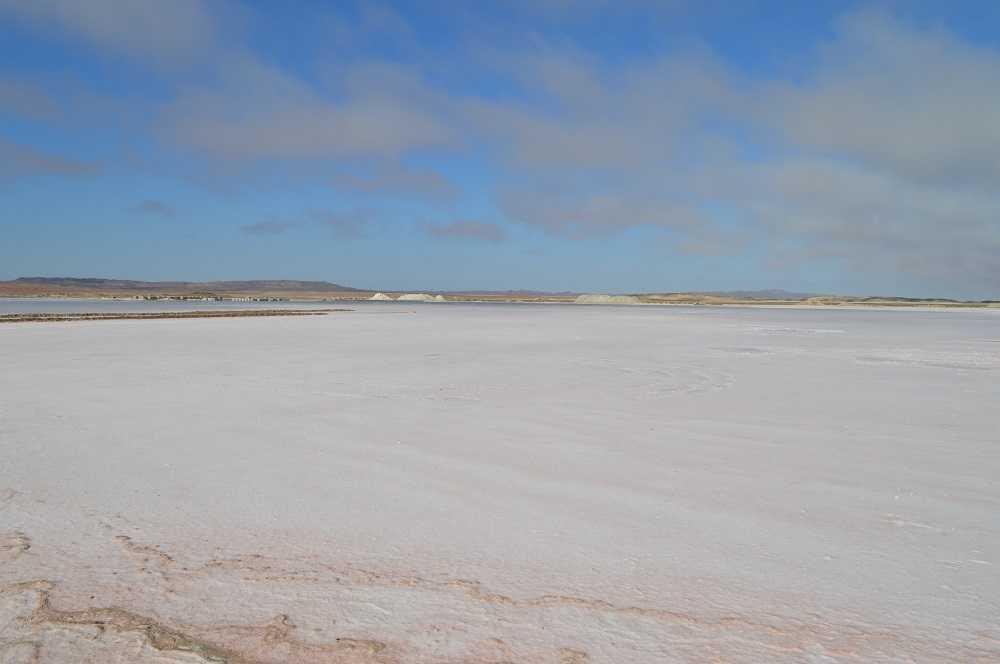
Dispute Over Portuguese Cross
The original Portuguese cross was taken to Germany in 1893. In 1895 a replica was erected only 15 meters from the original location. The original is still in a German museum. Germany has refused many requests by both Portugal and Namibia to return the cross.
Indeed, the founding father of Namibia and former president Dr. Sam Nojuma made a special request in 1990 to return the original cross. However, the Germans still refused to return the cross, even as a “token of goodwill” to their former colony.

Largest Cape Fur Seal Colony in the World
Cape Cross Seal Reserve is the largest colony of cape fur seals in the world. During peak season there can be as many as 210,000 seals on the cape. Additionally, breeding season is October-November and then the gestation period for pups is about 8 months. I was visiting in June which is about the time cows would have started giving birth to their pups.
During mating season the the bull seals can be quite aggressive marking off their territory. They fight off any males that dare venture into what they perceive as their property.
The bull seals can reach up to 660 lbs in weight and over 7ft in length. As a result, they will pose a threat to any intruders, whether man or seal. The more dominant bull seals have been known to have 60-70 cows as their mates. If they are able to defend themselves that is!
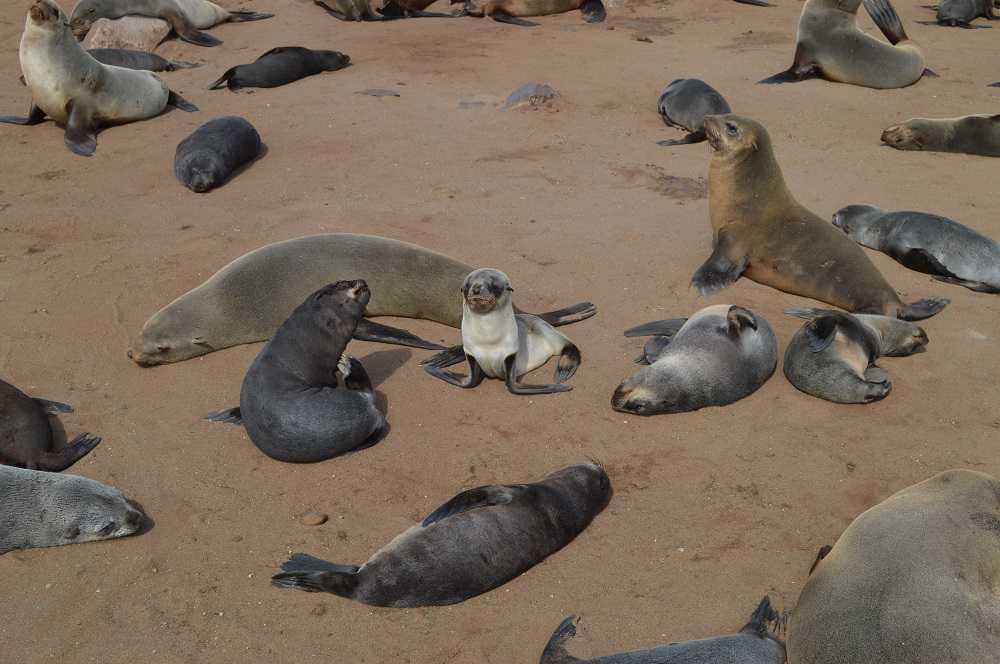
Characteristics of Cape Cross Namibia Seals
Cape Cross Namibia Seals are the same creature as the cape fur seal which is abundantly found on the Eastern Cape in South Africa. The stamina of Cape Cross Namibia Seals is excellent and it is the most robust fur seal in the world. Indeed, they have been spotted as far as 170 Kilometers offshore. However, this is extreme and most of their time is spent much closer to shore.
It is notable that Cape Cross Namibia Seals have external ear flaps, which makes them unique among other species of seal.
Furthermore, they have a rather large habitat range. The limitations of their habitat goes as far north as Cape Cross Seal Reserve to as far southeast as Port Elizabeth in the Eastern Cape in South Africa.
Surfing at Cape Cross Seal Reserve
This species of seal is very inquisitive and can be quite friendly with humans. Cape Cross Seal Reserve is also a surfing spot and the waves do get quite nice. They take shape as they charge up the Namibian coastline from South Africa and wrap nicely around Cape Cross.
However, the human surfers will have lots of company in the water. The Cape Cross Namibia Seals find this sport quite amusing and also like to join in the fun. This can get a bit hazardous, especially during the breeding season. This is because surfers can be seen as potential rivals for the seal cows. As a result, there are documented occurrences when surfers have been bitten by jealous bulls.
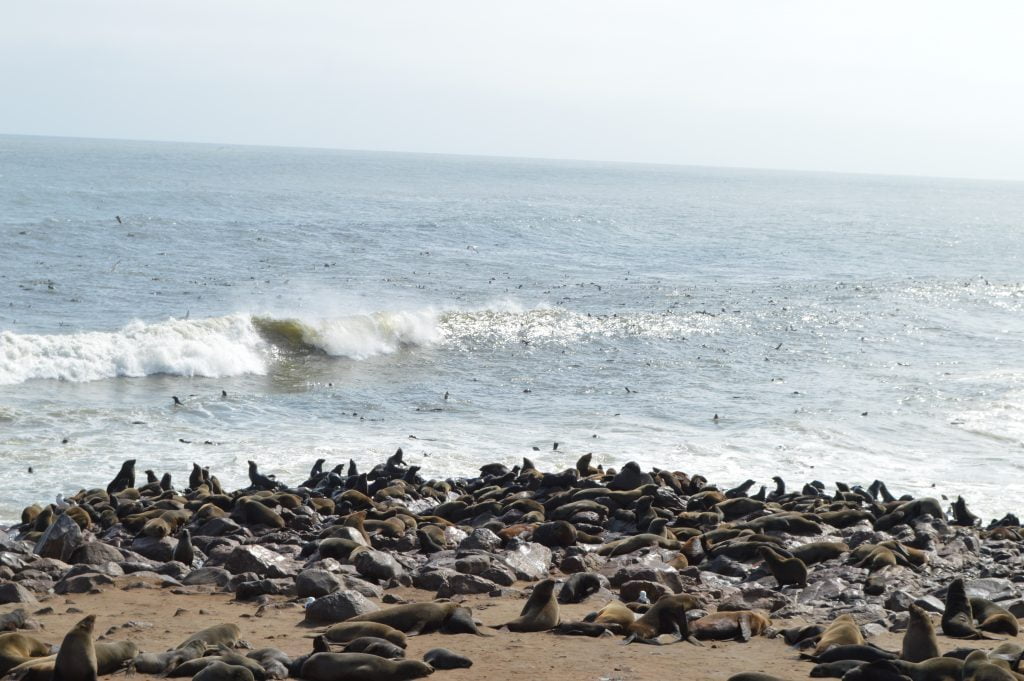
Seal Harvesting at Cape Cross Seal Reserve
Unfortunately, at Cape Cross Seal Reserve not all interaction with humans is advisable for seals. Indeed, the harvesting of Cape Cross Namibia Seals is a very controversial practice in today’s modern age. The purposes stated for harvesting seals include population control to protect the fishing industry in Namibia, the use of male genitalia to sell as aphrodisiacs in Asia and the harvest of seal pups for their pelts.
They are also still harvested for their fat which is rendered into oil. When I was at the reserve there was a small group of locals in the parking lot and we struck up a conversation. They did in fact still actively harvest seals at the Cape Cross Seal Reserve and he even had a 5 gallon container of seal oil to show me in back of his truck! Although I don’t think it was in season as he was not hunting for seals on that day. They just seemed to be taking it all in as I was doing.
Great White Sharks
However, at the Cape Cross Seal Reserve humans are not the only predators that like to hunt the Cape Cross Namibia Seals. As a result, the seals also need to keep a close watch out for the giant great white sharks that prowl in waters offshore of the reserve.
